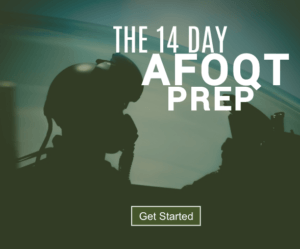Purpose
This part of the test measures your capacity to form a relationship between words. While it may sound straightforward, the complex word choice can certainly get under your skin. You will have to choose a finalized option among several choices. Furthermore, your analogical development should complement the closing relationship of each word.
Concept
The verbal analogies essentially focus on the words’ relationship. However, the concept primarily tests your ability to form logic. The best way to approach the Verbal Analogies subset is to have a realistic, logical method to understand the nature of presented words. And that means you should be able to identify unrelated words.
The trick is to familiarize yourself with as many verbal analogies as possible. Also, an exhaustive all-nighter study isn’t recommendable. Instead, think of it as a gradual and continuous process. This starting point would boost your chances to get better results out of 25 questions.
You can expect to identify verbal analogies that include synonymous, antonyms, classifications, definitions, and words that form a functional relationship. Remember, each question starts and ends with a capitalized word. Upon successful identification, you should mark the right answer on your answer sheet with the given number or letter choice.
Your score, however, will ultimately depend on selecting the right answers. Therefore, try to attempt every single question. You don’t have to worry about losing points or penalties for mere guessing. It would be wise, on the other hand, to not dwell too much on a single question. Lastly, make sure that you are starting out with question number 1 of Part 1 of the test on the answer sheet.
What are AFOQT Verbal Analogies?
The Verbal Analogies section of the AFOQT (Air Force Officer Qualifying Test) assesses your ability to recognize relationships between words and to understand verbal concepts. This section requires you to identify the connection between a pair of words and then apply that relationship to select the correct answer among multiple choices.
Key Strategies for AFOQT Verbal Analogies
To excel in the AFOQT Verbal Analogies section, it’s essential to understand the types of relationships that commonly appear on the test. Here are some key strategies to help you prepare:
Identify the Relationship: The first step in solving a verbal analogy is to identify the relationship between the given pair of words. Common relationships include synonyms, antonyms, part-to-whole, cause-and-effect, and function-to-object.
Create a Sentence: Formulate a sentence that clearly expresses the relationship between the two words. For example, if the analogy is “Pilot is to Airplane as Driver is to ___,” you might say, “A pilot flies an airplane, just as a driver drives a car.”
Eliminate Wrong Answers: Use the process of elimination to narrow down your choices. Discard any options that do not fit the relationship you’ve identified.
Practice with Sample Questions: Regular practice with verbal analogy questions can help you become familiar with the types of relationships and word pairs you’ll encounter on the test.
Common Pitfalls in AFOQT Verbal Analogies
Even well-prepared candidates can stumble in the Verbal Analogies section if they’re not careful. Here are some common pitfalls to avoid:
Misinterpreting Relationships: It’s easy to confuse the type of relationship between the word pairs. Always double-check that the relationship you’ve identified makes logical sense.
Overcomplicating the Analogy: Sometimes, the simplest explanation is the correct one. Avoid overthinking the relationship between the words.
Ignoring Word Meanings: Ensure that you fully understand the meanings of the words in the analogy. If you’re unsure, use context clues to help decipher unfamiliar terms.
Practice Tips for AFOQT Verbal Analogies
Here are some tips to help you practice effectively for the AFOQT Verbal Analogies section:
Expand Your Vocabulary: A strong vocabulary is crucial for success in verbal analogies. Regularly learn new words and review their meanings and relationships.
Use Flashcards: Create flashcards with common word pairs and their relationships. This will help reinforce your understanding of different analogy types.
Take Practice Tests: Complete full-length practice tests to simulate the exam environment. Focus on improving your speed and accuracy in identifying verbal relationships.
Frequently Asked Questions about AFOQT Verbal Analogies
Q: How many questions are in the AFOQT Verbal Analogies section?
A: The AFOQT Verbal Analogies section typically consists of 25 questions that must be answered within a set time limit.
Q: What types of relationships are tested in verbal analogies?
A: Common relationships include synonyms, antonyms, part-to-whole, cause-and-effect, and function-to-object.
Q: How can I improve my verbal analogy skills?
A: Regular practice, expanding your vocabulary, and familiarizing yourself with common relationship types are effective ways to improve your verbal analogy skills.
Need help preparing for your AFOQT?

Top Strategies for AFOQT Reading Comprehension | Study Now
Purpose The sole purpose of this subsection is to test your capacity to read, process, and understand small or extensive write material. Concept The

Understanding AFOQT Word Knowledge | Complete Vocabulary Guide
Purpose The underlying purpose of the AFOQT Work Knowledge section is to assess your general understanding of words and numerous

Boost Your AFOQT Math Knowledge Score | Expert Math Tips
Purpose The Math Knowledge section taps on cadets’ willingness to expand on fundamental arithmetic concepts. It means preparing beyond just

Understanding AFOQT Arithmetic Reasoning | Complete Math Guide
Purpose Arithmetic Reasoning essentially measures cadets’ capacity to solve from simple to complex problems. Applicants will have to decide the

AFOQT Verbal Analogies: Strategies and Tips for High Scores
Purpose This part of the test measures your capacity to form a relationship between words. While it may sound straightforward,






